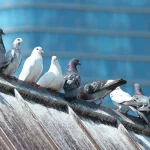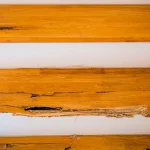
Receiving areas and loading docks keep your business running, providing a steady flow of products, supplies, and ingredients every day. But, unfortunately, the constant movement in these spaces also creates a variety of openings where pests make their way inside.
Pests have plenty of opportunities to sneak inside, thanks to the people and products always entering and exiting. Open doors, deliveries, nearby trash zones, and structures that attract nesting birds like sparrows all contribute to these risks.
However, there are plenty of ways to limit pest activity without slowing down operations. Here are a few straightforward strategies to help you get started.
Inspect Every Delivery for Warning Signs
Pests can slip into shipments at any point, at the source, in transit, or even after delivery. It’s important to make sure your team knows how to spot signs of pest activity. Train your employees on what to watch out for, and help them understand the steps to take if something seems off.
Also, set clear inspection expectations with your suppliers. Work together to outline specific protocols, clarify your standards, and decide how to handle any shipments that do not meet those requirements. Having a structured inspection process not only helps keep your vendors on the same page, but also lowers the chances of pest issues affecting your business.
Close Doors and Seal Entry Points
During the hustle of a busy day, receiving area doors might stay open for hours at a time. While this might feel convenient, keeping doors closed whenever possible helps reduce the chances of pests like flies, moths, rodents, and birds slipping inside.
If certain doors need to remain open, tools such as air curtains or strip doors can help provide a barrier for pests, without disrupting workflow. A Terminix Anderson specialist or pest management provider can recommend options that fit your facility’s needs.
In some cases, your Terminix Anderson representative could suggest additional preventive measures. This might include installing bait stations, bird netting, or insect light traps. If they notice something that needs to be addressed, they’ll be sure to let you know.
Understand the Importance of Clean Spaces
Considering the amount of supplies that move within receiving areas, spills are almost inevitable. Even a small amount of spilled food can quickly catch the attention of pests. Train your team on clear, detailed clean-up procedures, so spills can be handled promptly. But be sure to remember, spills are not limited to the immediate receiving zone, they can easily happen beneath trucks or around unloading spots as well.
Loading docks are often located at the rear of a facility, sometimes sharing their space with dumpsters or trash storage. Unfortunately, these areas are a magnet for pests. Rodents, flies, birds, and even larger wildlife are drawn by food waste, nesting materials, and lingering odors. Flies especially, as they can pick up scents from miles away and will follow them straight to potential food sources. The closer these pests get to your building, the more that they’ll want to find a way in.
Keeping the trash area clean and making sure dumpster lids are tightly closed can help reduce their interest. Regular cleaning of dumpsters and the surrounding pavement will also help cut down odors, and discourage pest activity near your facility.
Contact Terminix Anderson for More Tips
These are only a few of the steps that can help reduce the chances of pest issues in your receiving areas. With the right pest control approach, there are plenty of additional strategies you and your team can implement to keep pest activity to a minimum.
When your business is ready to take the next step, contact Terminix Anderson for a free facility inspection.





